No Garden? Best Cucumbers For Pickling From The Store
Discover the art of pickling even without a garden. Select and prepare the best cucumbers for pickling, and achieve crisp flavorful results.
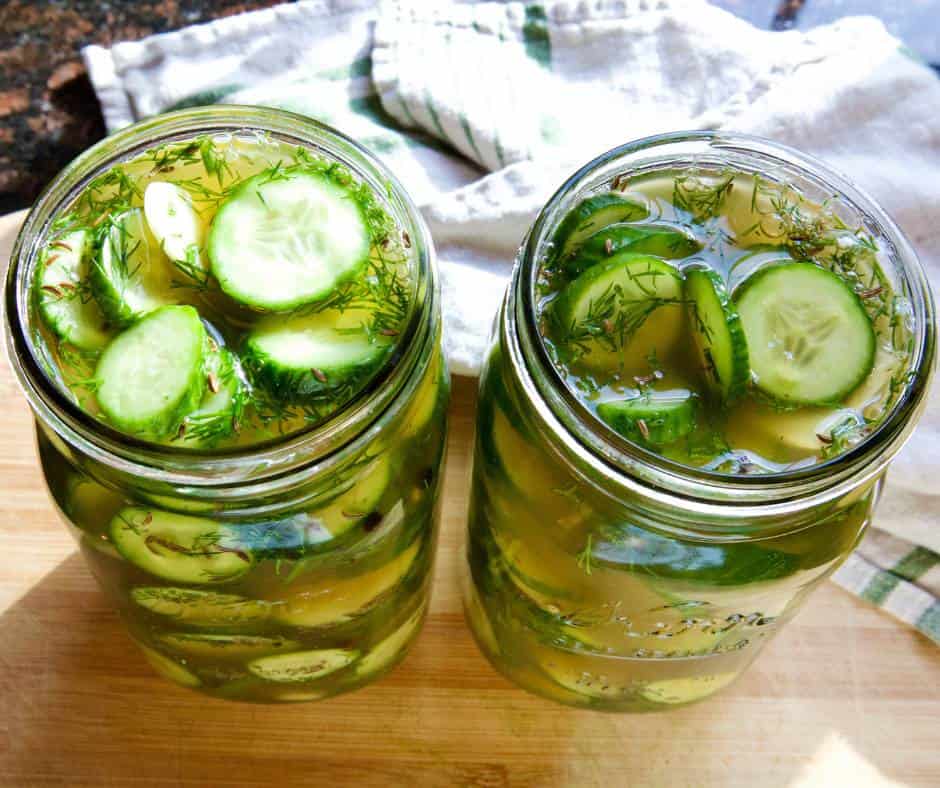
Discover the art of pickling perfection even without a garden of your own. Learn the secrets to selecting and preparing the best cucumbers for pickling, and achieve crisp and flavorful results in your pickles made at home.
If you enjoy sour foods like I do, eating pickles, sucking on lemons, and searching for the sourest candies you can find are all part of living! And finding the best pickling cucumbers is all part of the sour search.
Growing up in Wisconsin, eating sour pickles at the farmers market or the county fair was a must. Many local farmers grew delicious fresh cucumbers and a wide variety of fruits and vegetables, and they were very proud of their produce.
My grandfather was also a ‘sour guy’. When I was a little girl, I would go over to my grandparent’s house and we’d share a lemon, and see who could keep the straightest face. My grandparents even had a crab apple tree in their front yard, and I would climb up into it, sit on a nice solid branch, and eat as many crab apples as I could manage.
This article may contain affiliate links for your convenience. Also, as an Amazon Associate, I earn from qualifying purchases at no extra cost to you. You can read the full disclosure policy.
Why are pickled cucumbers a popular choice?
Pickles are a culinary favorite for many, and are liked for their simple yet satisfying flavors.
Whether you are biting into tart homemade dill pickles or exploring the sweet flavor of butter pickles, great pickles with their zesty and crispy appeal, seamlessly elevate any meal as a versatile side dish, accompaniment, or snack.
Pickle’s popularity lies in its humble yet delightful contribution to diverse cuisines worldwide.
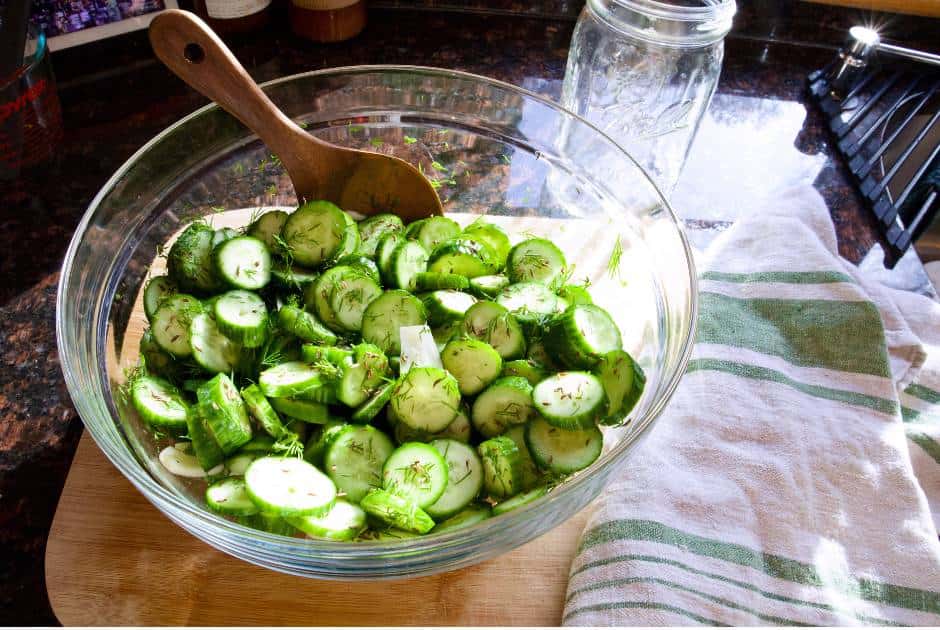
No Garden? No Problem
Not having a garden may seem like a genuine hurdle for those aspiring to make homemade pickles. Without the convenience of homegrown produce, one is left to navigate cucumbers in grocery stores a little more thoughtfully.
That said, with practical insights into grocery store cucumbers and how to pick them, the process of pickling becomes a very doable and rewarding endeavor.
Small gardens or garden limitations should not hinder you from pickling cucumbers and enjoying the homemade pickling process.
Ideal Cucumber Characteristics For Pickling
First, to be clear, many people think of cucumbers as a vegetable but in fact, they are scientifically considered to be a fruit because they contain seeds and develop from female flowers (1).
There are three types of cucumbers: seedless, seeded, and mini, and there are close to 100 varieties of cucumbers. Florida is the top producer of cucumbers in the United States, and Michigan leads the way in producing cucumbers best for pickling (1).
When it comes to pickle recipes, it all starts with picking the best cucumbers for pickling. The ideal characteristics when looking for cucumbers to pickle are size, skin texture, and seeds.
Size
Cucumbers should be uniform in size when it comes to pickling, The right size cucumber allows for consistent flavor and texture in every jar.
Skin Texture
Avoid a cucumber that has thick skin. Thin skin cucumber varieties facilitate better absorption of the pickling brine, which ensures a delicious crunchy texture in every bite.
Seeds
Searching for seedless cucumbers is best. Cucumbers that do not have any seeds, or at the very least small seeds, help to streamline the pickling process and enhance the overall efficiency of preservation.
When searching for the perfect cucumbers to pickle, consider these three characteristics to achieve pickling perfection.
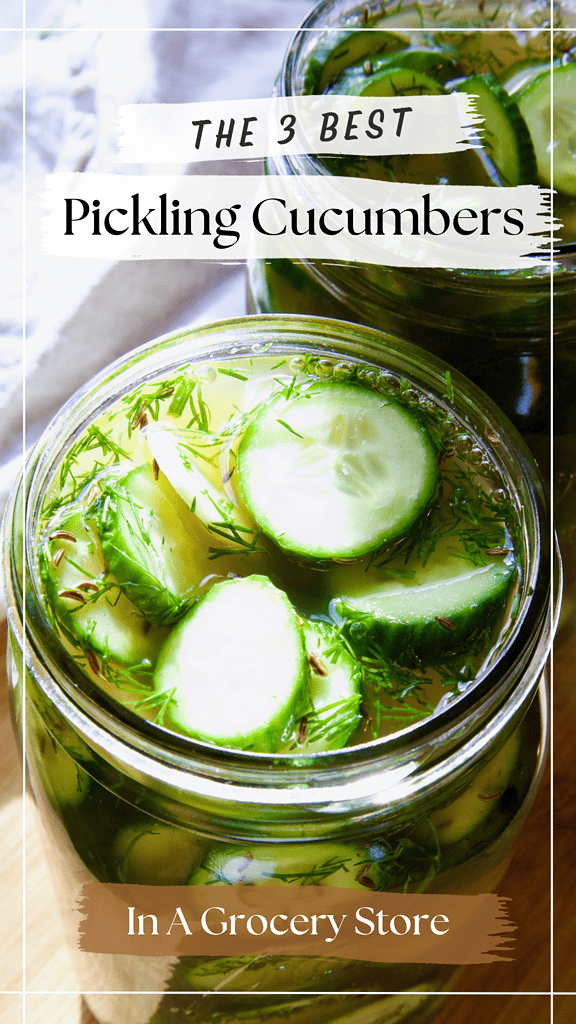
3 Best Grocery Store Cucumbers For Pickling
1. Kirby Cucumbers
The Kirby cucumber is a great pickling cucumber. They are the smallest of cucumbers and are becoming quite popular in grocery stores.
They usually range under 6 inches long and have bumpy skin. Kirby cucumbers come in different colors ranging from yellow to dark green skin, and their small size makes them perfect for pickling.
These baby cucumbers are sometimes called “pickling cucumbers” when you look for them in the grocery store.
2. Persian Cucumbers
Persian cucumbers are small in size, sweet, and with very small underdeveloped seeds. The skin is smooth and thin so you do not need to peel these before eating or pickling.
The inside of a Persian cucumber is usually more crunchy and less watery than other varieties (2).
Persian cucumbers are sometimes called “burpless cucumbers” because they tend to be mild and easy to digest.
3. English Cucumbers
English cucumbers are the longest of cucumbers. They have thinner skin and are long, narrow, and often wrapped in plastic at the grocery store.
This type of cucumber is smooth with a furrowed texture, and the inner flesh of these cucumbers is crisp, slightly sweet, and with a mild flavor (2).
English cucumbers are also known as “hot house cucumbers”. They have a crisp texture which makes them a great choice for pickling.
Selecting The Best Cucumbers For Pickling In A Grocery Store
Selecting the best cucumbers is all about looking for, and feeling for, freshness and optimal crunch.
Here are my top tips for choosing the best cucumbers for pickling in a grocery store.
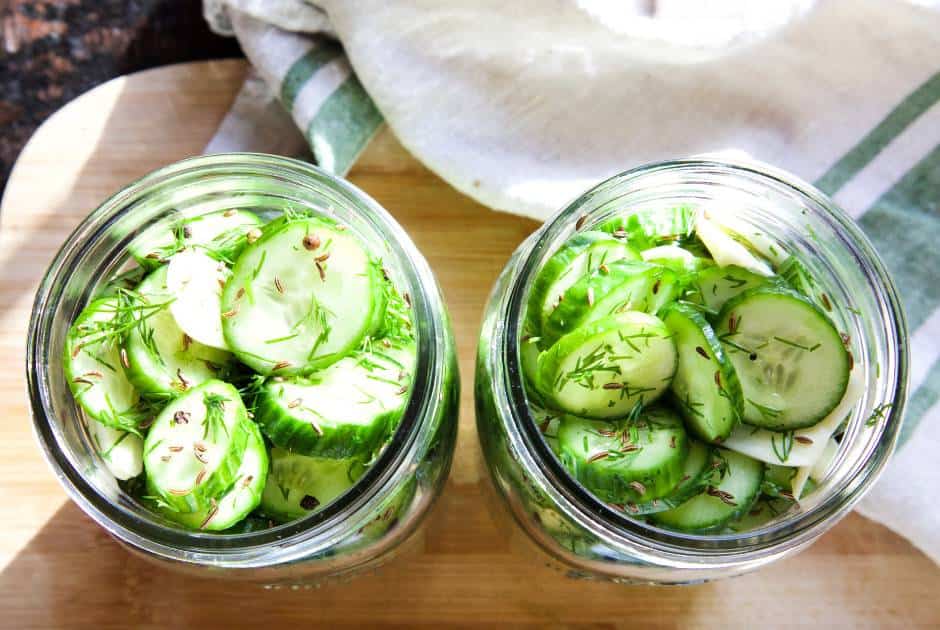
1-Day Dill Pickled Cucumbers Recipe
Now that you know how to pick the best cucumbers for pickling, check out this quick and easy dill pickled cucumber recipe you can make in one day!
INGREDIENTS
- 12 Persian cucumbers – equal in size preferably
- 2 cups apple cider vinegar
- 2 cups filtered water
- 1/4 cup pure maple syrup
- 4 garlic cloves – thinly sliced
- 2 tsp caraway seeds
- 2 tsp peppercorns
- 1/4 cup fresh dill – chopped
- 1 tbsp kosher salt
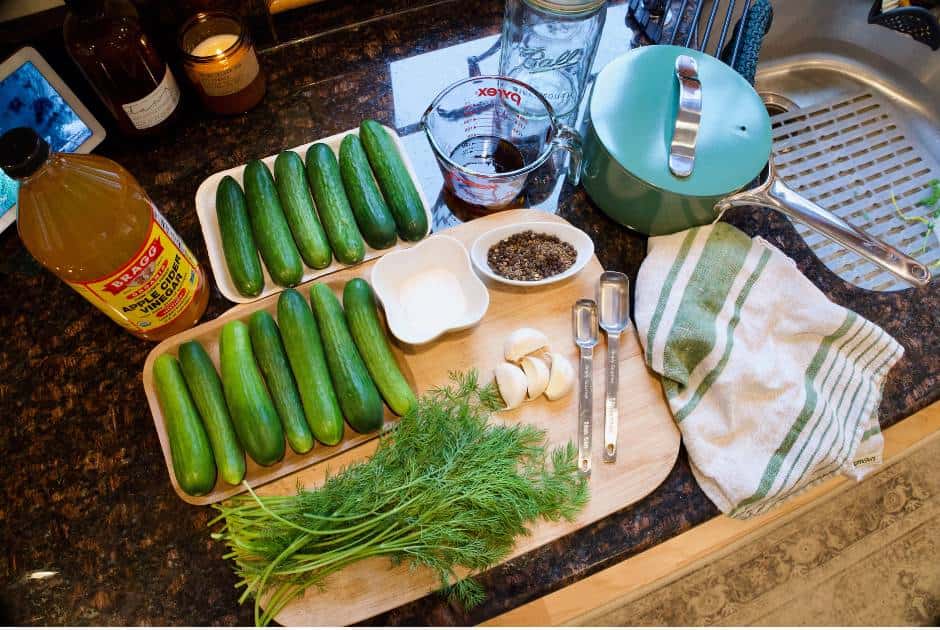
KITCHEN TOOLS
mason jars – two 32-ounce jars
saucepan – these are my favorite pans
INSTRUCTIONS
- Wash and dry the cucumbers thoroughly. Then slice into thin rounds evenly.
- In a medium saucepan, add the water, apple cider vinegar, maple syrup, and salt. Place it on the stove on a medium heat. Stir until sugar and salt are completely dissolved.
- Once dissolved, take off the stove and allow to cool for a few minutes.
- While the brine is cooling, place the cucumbers, garlic, dill, caraway seeds, and peppercorns in a large glass mixing bowl. Stir gently to combine and make sure all of the ingredients are blended evenly.
- Transfer the cucumber mixture into the two mason jars. Fill to the top and pack down evenly,
- Pour the brine to the top and over the cucumbers. Push down the cucumbers if needed.
- Let the cucumbers sit on the counter to cool to room temperature.
- Once cooled, place the lid on the mason jar securely, and place the cucumbers in the fridge to “pickle.”
- The pickled cucumbers will be good to eat after 24 hours and will get more flavorful as the days go on. ENJOY!
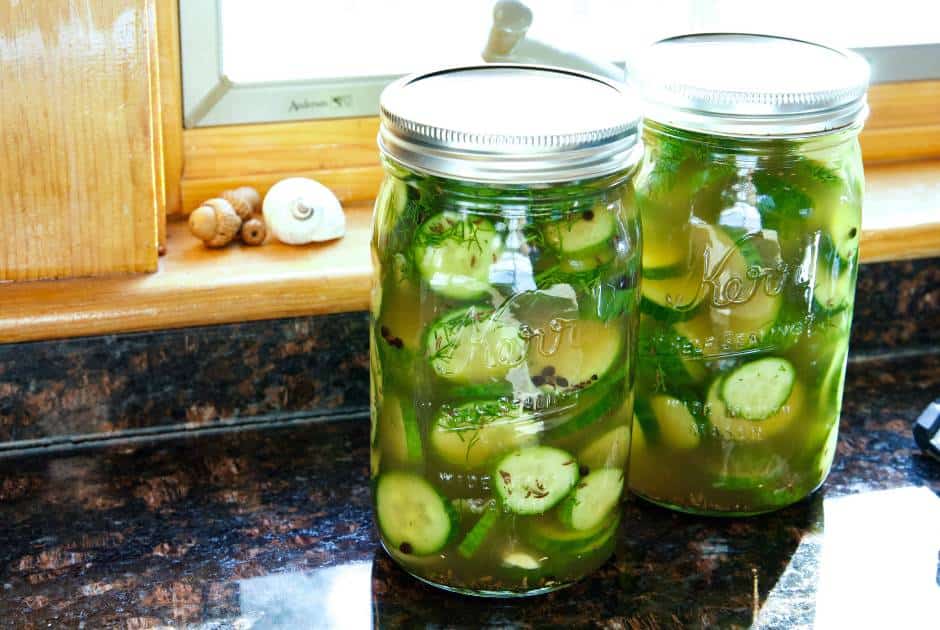
TIPS FOR SUCCESS
Instead of Persian cucumbers, you can also use English or Kirby cucumbers. These are all good cucumbers to pickle.
Feel free to use honey, or even white or brown sugar instead of maple syrup. Although I always advise, that the less processed the better.
You can use distilled white vinegar or white wine vinegar instead of apple cider vinegar if you desire.
It is important to make sure the cucumbers and brine are cooled to room temperature before placing them in the fridge. Otherwise, the pressure of the heat and steam could pop your lid off while in the refrigerator.
Feel free to mix up the herbs and seasonings if you prefer. Experiment and have fun.
HOW TO STORE
When stored properly with a tightly sealed lid, pickled cucumbers can last in the fridge anywhere from 1 to 2 months.
The duration can vary depending on storage conditions, the brine’s acidity, and the freshness of the cucumbers.
It is important to always check for signs of spoilage before eating. Signs such as an off smell, or change in the cucumber’s color or texture.
The Joy Of Pickling – Even Without A Garden
Selecting the best cucumbers for pickling is essential for consistent texture, proper flavor absorption, and a delightful crunch in your homemade pickles.
I encourage you to playfully experiment with cucumber varieties such as the Kirby, Persian, or English cucumber. Have fun and discover unique flavors and textures that suit your taste preferences.
You can still experience the joy of pickling, even without a garden. So embrace the simplicity of store-bought cucumbers, have fun experimenting in the kitchen, and appreciate the simple pleasure of biting into a perfectly crunchy and delicious homemade pickled cucumber.
More healthy recipes, and caregiver support for you to enjoy
Let’s Connect
I hope you enjoyed this article and experiment with making delicious pickled cucumbers.
Please consider commenting below and letting me know your thoughts. And if you would give this yummy recipe 5 stars below, I would be so grateful.
Keep in touch, I’d love to hear from you.
Printable Recipe Card For You To Enjoy
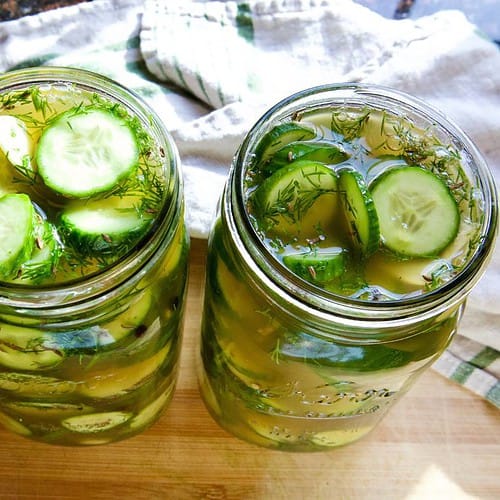
1-Day Dill Pickled Cucumbers
Equipment
Ingredients
- 12 Persian cucumbers – equal in size preferably
- 2 cups apple cider vinegar
- 2 cups filtered water
- 1/4 cup pure maple syrup
- 4 garlic cloves – thinly sliced
- 2 tsp caraway seeds
- 2 tsp peppercorns
- 1/4 cup fresh dill – chopped
- 1 tbsp kosher salt
Instructions
- Wash and dry the cucumbers thoroughly. Then slice into thin rounds evenly.
- In a medium saucepan, add the water, apple cider vinegar, maple syrup, and salt. Place it on the stove on a medium heat. Stir until sugar and salt are completely dissolved.
- Once dissolved, take off the stove and allow to cool for a few minutes.
- While the brine is cooling, place the cucumbers, garlic, dill, caraway seeds, and peppercorns in a large glass mixing bowl. Stir gently to combine and make sure all of the ingredients are blended evenly.
- Transfer the cucumber mixture into the two mason jars. Fill to the top and pack down evenly,
- Pour the brine to the top and over the cucumbers. Push down the cucumbers if needed.
- Let the cucumbers sit on the counter to cool to room temperature.
- Once cooled, place the lid on the mason jar securely, give the jars a turn or two to get the brine on all of the cucumbers.
- Place the cucumbers in the fridge to "pickle."
- The pickled cucumbers will be good to eat after 24 hours and will get more flavorful as the days go on. ENJOY!
Notes
- Instead of Persian cucumbers, you can also use English or Kirby cucumbers. These are all good cucumbers to pickle.
- Feel free to use honey, or even white or brown sugar instead of maple syrup. Although I always advise the less processed the better.
- You can use distilled white vinegar or white wine vinegar instead of apple cider vinegar if you desire.
- It is important to make sure the cucumbers and brine are cooled to room temperature before placing them in the fridge. Otherwise, the pressure of the heat and steam could pop your lid off while in the refrigerator.
- Feel free to mix up the herbs and seasonings if you prefer. Experiment and have fun.
- When stored properly with a tightly sealed lid, pickled cucumbers can last in the fridge anywhere from 1 to 2 months.
- The duration can vary depending on storage conditions, the brine’s acidity, and the freshness of the cucumbers.
- It is important to always check for signs of spoilage before eating. Signs such as an off smell, or change in the cucumber’s color or texture.
- ENJOY!
Nutrition
Reference
- https://www.wifss.ucdavis.edu/wp-content/uploads/2016/05/FDA_WIFSS_-Cucumbers_PDF.pdf
- https://specialtyproduce.com/produce/Persian_Cucumbers_9121.php

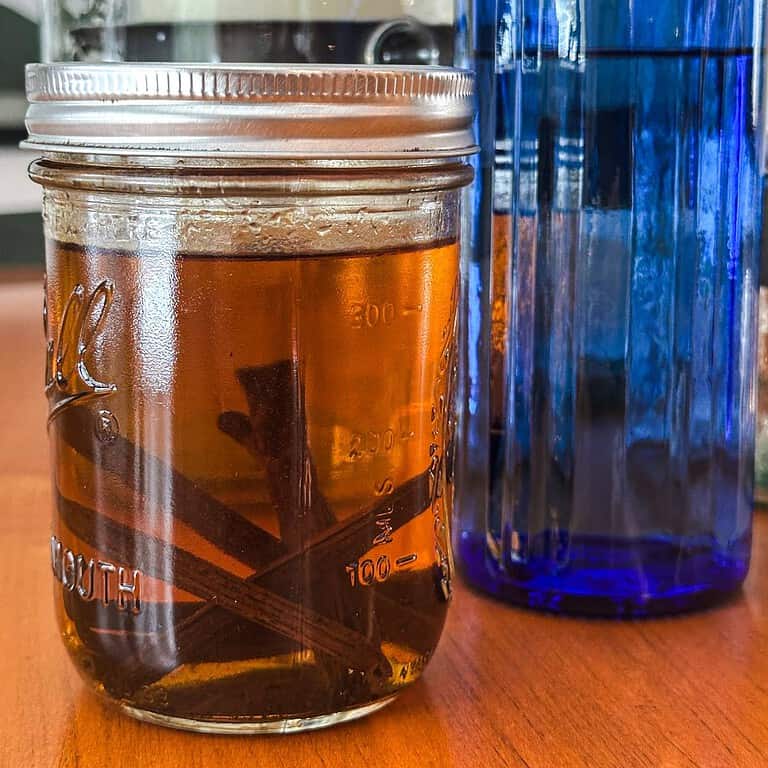


I love this guide! Before I had my garden & greenhouse, I spent years not sure how to pick out the right vegetables at the grocery store for pickling, canning, fermenting, and all the rest. I wish I found this then! I’m also a lover of all things sour – so I’ll be adding this to my recipe repertoire as soon as the cucumbers come in!
Thank you Tereza!Picking fruits and veggies in the grocery store should be an art form…ha! I’ve had farmer’s talk to me for 10-15 minutes on how to pick the best cucumbers and other delicious veggies in the produce aisle. It really matters! 😉